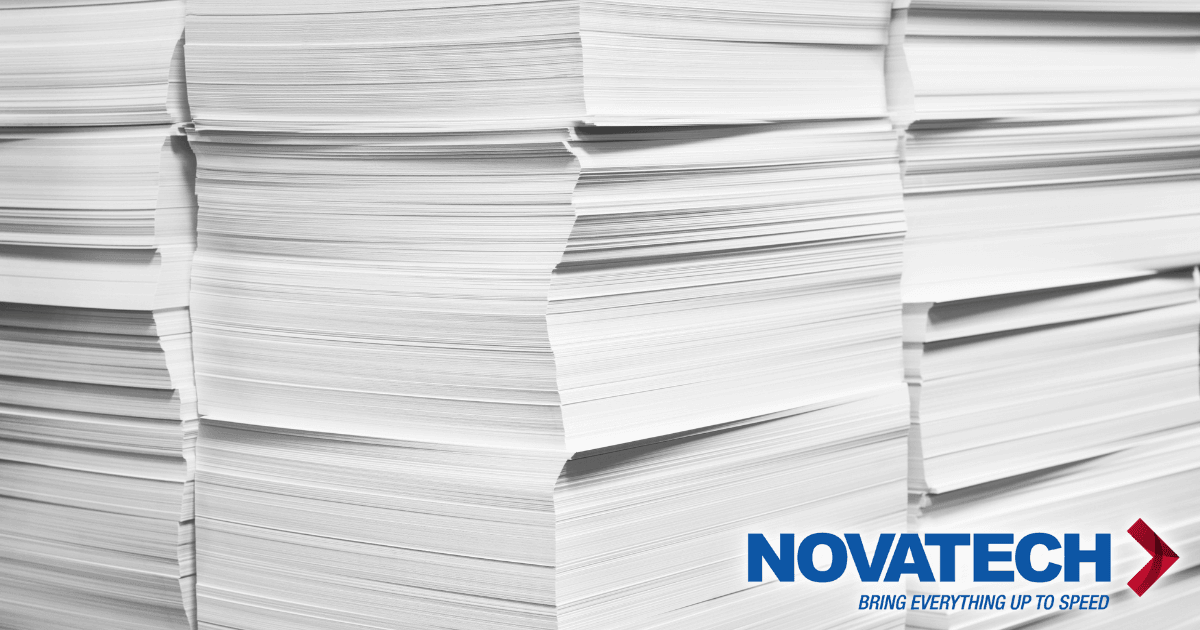Decoding Paper Weights: Your Complete Guide
3 min read

With various terminologies such as Bond, Text, Cover, Bristol, Index, Tag, and Metric floating around, it’s easy to feel overwhelmed. Let’s simplify it together.
The basics of paper weight can be decoded once you understand that it’s essentially a measure of the thickness or density of a piece of paper. However, this measurement is not as straightforward as it seems, as it varies depending on the ‘type’ of paper in question. To aid your understanding, we’ve broken down these terms and their conversions.
- Bond: This type of paper is most commonly used for letterhead, business forms, and copiers. Bond weight, often referred to as the ‘basis weight’, is measured in pounds and refers to the weight of 500 sheets (a ream) of 17″ x 22″ paper.
- Text: This is a lighter-weight paper used for stationery, resumes, or letterheads. It’s also measured in pounds, and its basis size is 25″ x 38″.
- Cover: As the name implies, Cover paper is used for covers of brochures, booklets, and the likes. It’s a heavy paper, and its basis size is 20″ x 26″.
- Bristol: This type of paper is typically used for things like tickets and tags. The basis size for Bristol paper is 22.5″ x 28.5″.
- Index: Index paper is commonly used for index cards or postcards. Its basis size is 25.5″ x 30.5″.
- Tag: Tag paper is robust and used for heavy-duty applications like table tents and tags. The basis size is 24″ x 36″.
- Metric (gsm): This refers to grams per square meter (gsm or g/m²). This measurement is the same no matter the sheet size, making it a straightforward and universal way to compare paper weights.
To convert from one type to another, you’ll need a conversion chart, as each type of paper has a different basic sheet size, and thus, the weight of a ream of these paper types is different.
At Novatech, we understand that these conversions can be a bit complex. Hence, we have developed comprehensive tools and resources to assist you in understanding and selecting the right paper for your specific needs. With over 25 years in the industry, we’re equipped with the knowledge and expertise to guide you through the maze of paper selection, ensuring you achieve the best possible output from your copiers and printers.
Through our Managed IT Services, we also provide insightful recommendations on the most appropriate hardware and software to optimize your printing processes, further adding to the quality and efficiency of your operations. We are dedicated to partnering with you to simplify your technology needs, allowing you to focus on what truly matters – your business.
Understanding paper-weights is just one part of the printing process. With Novatech, you can rest assured that all your printing needs are taken care of with precision and professionalism. Your success is our success. Let’s print the future together!
FAQs
What is the best paper weight for my printing needs?
The choice of paper weight greatly depends on the purpose of your document. For regular office documents, 20 lb bond paper works well. If you’re printing a brochure or a booklet, you may want to consider heavier paper like cover paper.
How does paper weight affect the quality of my print?
The weight of the paper can influence the perception of your print. Heavier papers often feel more professional and substantial, and they can also be more durable. However, it’s important to ensure that your printer can handle the paper weight you select to avoid any jams or issues.
How can I know if a particular paper weight is suitable for my printer?
Most printer manuals will provide information on the range of paper weights that the printer can effectively handle. You can also contact our team at Novatech for personalized advice and solutions.


